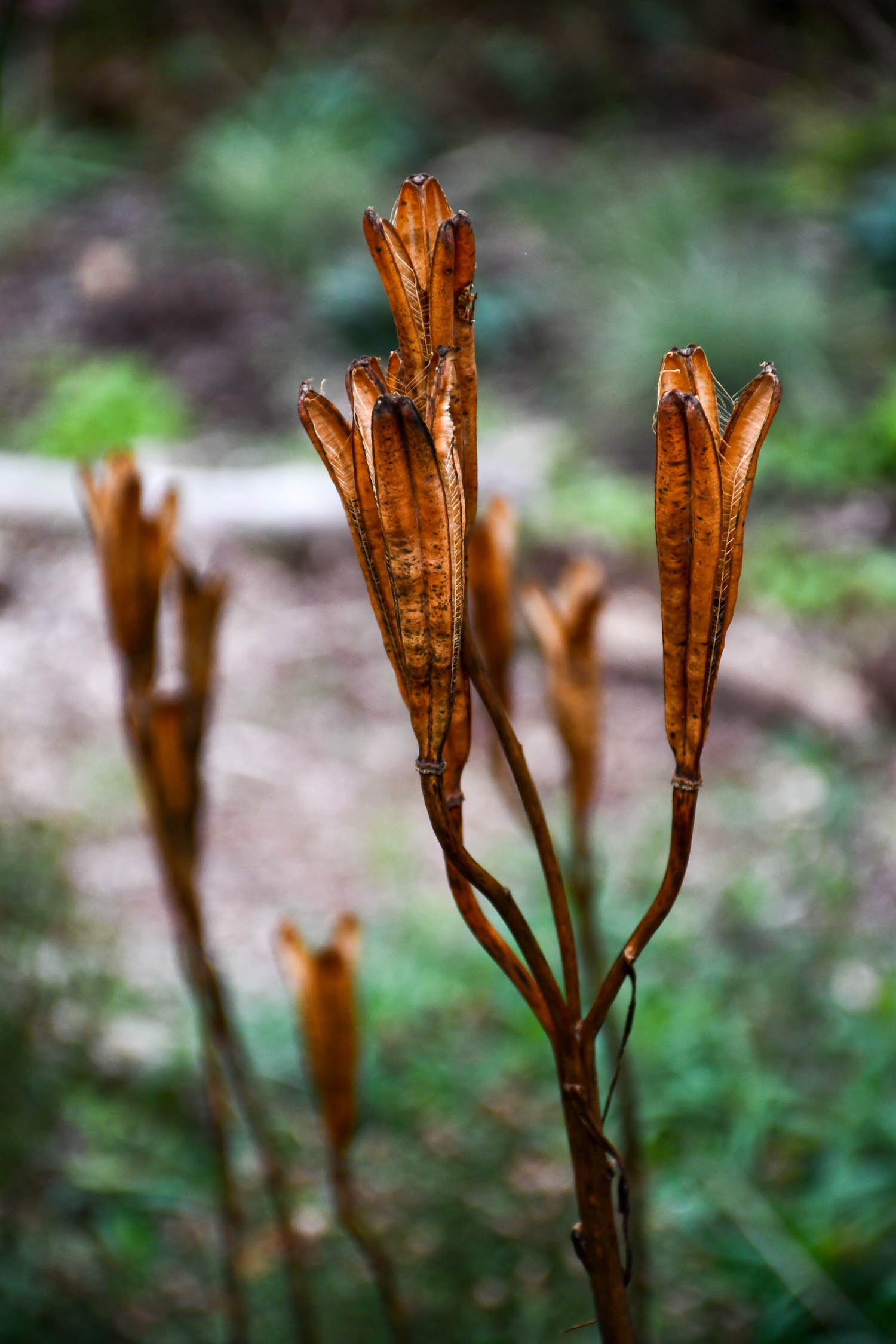Today looks cold enough to snow with the low gray sky. I’m more used to this weather in February than I am November. The forecast said the high won’t break 50ºF today. Alas, the only thing falling from the sky will be rain.
I do a final walk around before the clouds burst. We’ve now had a few frosts, one hard one this past weekend. Looking out over the garden, most of the flowering plants are now done. I’m afraid even my late flowering ‘Halloweenie’ glads (Gladiolus dalenii) that haven’t bloomed yet (and with their tardiness in past years I’ve joked should be named ‘Thanksgivingie’) are going to get hit with more freezing temperatures we have coming this week.
So on this walk I’m thinking of frost-proof winter interest I have for the next few months in the garden. I’m counting my garden blessings if you will to see what at the end of the season I can appreciate.
Seed heads are at the top of the list as they have such a prominent presence in the winter landscape. They are skeletons of the past that, a glimpse of what the garden once was in the height of its empire.
Near the house Helianthus radula (rayless sunflower) still looks spectacular as the black stems pop against the froth of Eragrostis spectablis (purple lovegrass, header image). On the other side of the lovegrass rise the black buttons of Pycnanthemum tenuifolium (narrow-leaf mountain mint). It is one of my favorite perennials for its multi-season interest in the landscape. I make a note to pair more blacks with the winter foliage of the love grass for next year.
There are also some Lilium formosanum (Formosan lily) in the bed that rise up and have started to release seeds from their brown chalices. I just transplanted them to that spot this spring, so their height is much shorter. I quite like their more diminutive nature.
Pycnanthemum tenuifolium
Lilium formosanum
As I walk further along the bed, I see the spherical seedheads of Hyptis alata (clustered bushmint). They will last the rest of winter, though I have to be careful whenever I remove them come spring because they are loaded with seed that I’ll be weeding for months afterwards if they spill.
Hyptis alata
Nearing the orchard, I startle some Dark-eyed Juncos. They are the first I’ve seen this year, and I’m delighted the cold fronts have brought them back to the garden. They dart under the glimmering split-beard bluestem (Andropogon ternarius). Even on a sunless day, the plant still shines. The clumps are now in their second year, and I realize the site I put it on is too fertile as some have lodged and thus made an even better hiding place for the juncos and other little brown birds mixed in the flock. Next year, I’ll have to cut them back in mid-summer much like they do when mowing the roadside to help keep it shorter for lasting winter interest.
Andropogon ternarius
There are still a few Baptisia alba (white wild indigo) in the orchard beds. For us they start going dormant in late August or early September. It’s always a hard call for me to ask do these dead twigs stay or do they go. But, I seem to always err on letting them stay. Some have already blown away with their tumbleweed action, and I have found them next to a fence or in the ditch by the road. It’s a creative approach to seed dispersal.
Another Baptisia, yellow wild indigo, is nearby in the front of the patch and has more spherical fruit, hence the epithet sphaerocarpa for the round (sphaero-) fruit (-carpa) it forms.
Baptisia alba
Baptisia sphaerocarpa
Vernonia baldwinii (western ironweed) also looks good in its last moments. I have found they have staying power into the winter with their feather-duster seed heads. The pappus is such a nice light tan and pops against the dark stems.
Vernonia baldwinii
A flock of winter birds is once again startled as I make my way back toward the house. I think how seedheads are not just a blessing for me. I know that the winter birds enjoy them, too. That’s why I admire them while I can before they and the wind spread the seeds. Such thoughts warm my soul, perhaps as much as the corn chowder I’ll have tonight after a cold autumn day.







